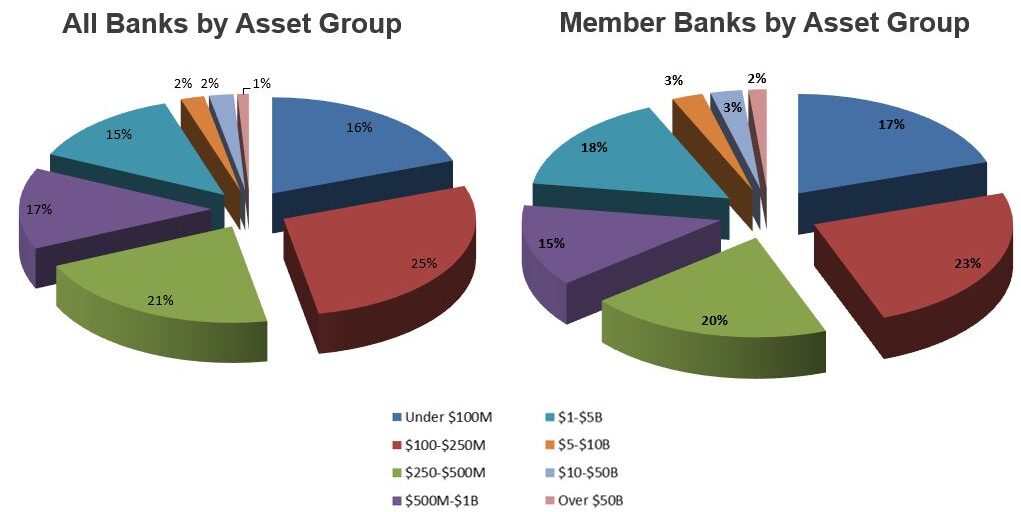What Is ABA For Banking: A Comprehensive Guide To Understanding ABA In The Banking World
Ever wondered what ABA means in banking? Well, buckle up because we're about to dive deep into the world of ABA and how it impacts your banking experience. You might have seen the term ABA routing number floating around when setting up direct deposits or sending money, but what exactly is it? Stick around, and we'll break it all down for you.
ABA isn't just another banking acronym; it's a crucial piece of the financial puzzle. Understanding ABA can help you navigate the banking system more effectively, ensuring your transactions are smooth and secure. In this article, we'll explore everything you need to know about ABA in banking, from its origins to its modern-day applications.
Let's face it, the banking world is filled with jargon that can leave even the savviest of us scratching our heads. But don't worry, by the end of this article, you'll be an ABA pro, ready to tackle any banking challenge that comes your way. So, let's get started!
Read also:Fox News Lawrence Jones The Rising Star In Political Broadcasting
What is ABA in Banking?
ABA, or the American Bankers Association, is the governing body that created the routing number system used by banks in the United States. The ABA routing number is a nine-digit code that identifies financial institutions in the U.S. This number is essential for processing checks, setting up direct deposits, and transferring funds between accounts.
The ABA routing number was first introduced in 1910 to streamline the check-clearing process. Since then, it has become a vital component of the banking system, ensuring that funds are routed to the correct bank or credit union.
How Does the ABA Routing Number Work?
The ABA routing number works by providing a unique identifier for each financial institution. This identifier helps financial institutions communicate with each other when processing transactions. Here's a breakdown of how it works:
- The first four digits represent the Federal Reserve routing symbol.
- The next four digits are the bank's identification number.
- The final digit is a checksum, which ensures the routing number is valid.
This system ensures that transactions are processed accurately and efficiently, reducing the risk of errors.
Why is ABA Important in Banking?
ABA plays a crucial role in the banking industry by maintaining standards and promoting best practices. The ABA routing number system is just one example of how the organization contributes to the smooth operation of the financial system. Here are some reasons why ABA is important in banking:
- It ensures the security and integrity of financial transactions.
- It provides a standardized system for identifying financial institutions.
- It helps prevent fraud and unauthorized transactions.
Without ABA, the banking system would be much less efficient and more prone to errors. The organization's commitment to excellence has made it an indispensable part of the financial landscape.
Read also:5movierulz 2023 Ndash Your Ultimate Guide To Downloading Movies Safely And Legally
ABA Routing Number vs. SWIFT Code: What's the Difference?
While both ABA routing numbers and SWIFT codes are used to facilitate financial transactions, they serve different purposes. Here's a quick comparison:
- ABA routing numbers are used for domestic transactions within the U.S.
- SWIFT codes are used for international transactions.
- ABA routing numbers are nine-digit codes, while SWIFT codes are alphanumeric and can be up to 11 characters long.
Understanding the difference between these two systems can help you choose the right option for your banking needs.
How to Find Your ABA Routing Number?
Finding your ABA routing number is easier than you might think. Here are a few methods you can use:
- Check the bottom of your checks. The ABA routing number is usually the first set of numbers printed there.
- Log in to your online banking account and look for the routing number in your account details.
- Contact your bank's customer service team for assistance.
Remember, each bank has its own unique ABA routing number, so it's important to verify that you're using the correct one for your transactions.
Common Mistakes to Avoid When Using ABA Routing Numbers
Mistakes happen, but when it comes to ABA routing numbers, even small errors can lead to big problems. Here are some common mistakes to avoid:
- Using the wrong routing number for your bank.
- Transposing digits in the routing number.
- Not double-checking the routing number before submitting a transaction.
By being vigilant and double-checking your routing number, you can help ensure that your transactions are processed correctly.
ABA's Role in Modern Banking
In today's digital age, ABA continues to play a vital role in shaping the future of banking. The organization works closely with banks and other financial institutions to develop innovative solutions that enhance the customer experience. Here are some ways ABA is impacting modern banking:
- Advocating for regulatory reforms that benefit consumers and businesses.
- Providing resources and training to help banks stay ahead of emerging trends.
- Supporting the development of new technologies that improve the efficiency and security of financial transactions.
ABA's commitment to innovation and excellence ensures that the banking industry continues to evolve and meet the needs of its customers.
The Future of ABA in Banking
As the banking industry continues to evolve, ABA will undoubtedly play a key role in shaping its future. With advancements in technology and changing consumer preferences, the organization will need to adapt and innovate to remain relevant. Some potential areas of focus for ABA in the future include:
- Enhancing cybersecurity measures to protect consumers from fraud and identity theft.
- Exploring the use of blockchain technology to improve the speed and efficiency of financial transactions.
- Advocating for policies that promote financial inclusion and access for all individuals.
By staying ahead of the curve, ABA can continue to be a driving force in the banking industry for years to come.
ABA Routing Number Security: What You Need to Know
Security is a top priority when it comes to banking, and ABA routing numbers are no exception. While routing numbers themselves are not sensitive information, they can be used in conjunction with other data to commit fraud. Here are some tips to help you keep your ABA routing number secure:
- Never share your routing number with untrusted sources.
- Be cautious when entering your routing number online, and make sure the website is legitimate and secure.
- Monitor your bank account regularly for any suspicious activity.
By following these simple steps, you can help protect yourself from potential fraud and ensure the security of your financial information.
ABA's Efforts to Combat Financial Fraud
ABA is committed to fighting financial fraud and protecting consumers. The organization works closely with banks and law enforcement agencies to identify and prevent fraudulent activities. Some of the ways ABA combats financial fraud include:
- Providing education and resources to help consumers recognize and avoid scams.
- Collaborating with industry partners to develop new technologies and strategies for detecting and preventing fraud.
- Advocating for stronger regulations and penalties for those who engage in fraudulent activities.
Through these efforts, ABA is helping to create a safer and more secure banking environment for everyone.
How ABA Routing Numbers Impact International Transactions
While ABA routing numbers are primarily used for domestic transactions within the U.S., they can also play a role in international transactions. For example, if you're sending money from a U.S. bank to an international account, you may need to provide both an ABA routing number and a SWIFT code. Here's what you need to know:
- ABA routing numbers are used to identify the originating bank in the U.S.
- SWIFT codes are used to identify the receiving bank in the destination country.
- Both numbers are required to ensure that the transaction is processed correctly and efficiently.
Understanding how ABA routing numbers fit into the international transaction process can help you avoid delays and ensure a smooth transfer of funds.
Tips for Using ABA Routing Numbers in International Transactions
When using ABA routing numbers for international transactions, it's important to follow these tips:
- Verify the routing number with your bank to ensure accuracy.
- Double-check all transaction details, including the SWIFT code and account numbers.
- Be aware of any fees associated with international transactions and factor them into your budget.
By taking these precautions, you can help ensure that your international transactions are processed smoothly and efficiently.
Conclusion: Why Understanding ABA is Essential for Your Banking Needs
In conclusion, understanding what ABA means in banking is crucial for anyone looking to navigate the financial system effectively. From its origins as a check-clearing system to its modern-day applications in electronic transactions, ABA has played a vital role in shaping the banking industry. By familiarizing yourself with ABA routing numbers and their functions, you can help ensure that your transactions are processed accurately and securely.
So, the next time you're setting up a direct deposit or transferring funds, remember the importance of ABA routing numbers and the role they play in the banking world. And don't forget to share this article with your friends and family so they can become ABA pros too!
Table of Contents:
- What is ABA in Banking?
- How Does the ABA Routing Number Work?
- Why is ABA Important in Banking?
- ABA Routing Number vs. SWIFT Code
- How to Find Your ABA Routing Number?
- Common Mistakes to Avoid
- ABA's Role in Modern Banking
- The Future of ABA in Banking
- ABA Routing Number Security
- How ABA Routing Numbers Impact International Transactions


![ABA Banking Industry Response List Review cat[&]tonic](https://cat-tonic.com/wp-content/uploads/may20FD01_blog_image.jpg)
